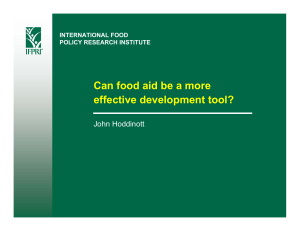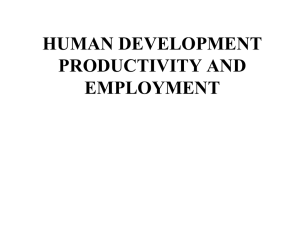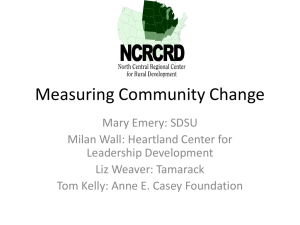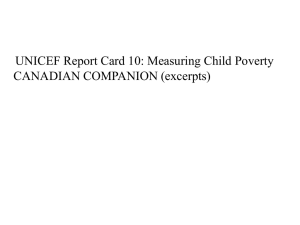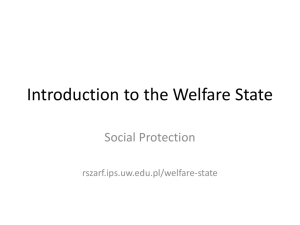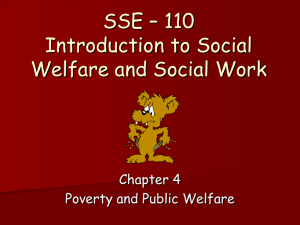Multi-dimensional poverty in the region: Grenada context
advertisement
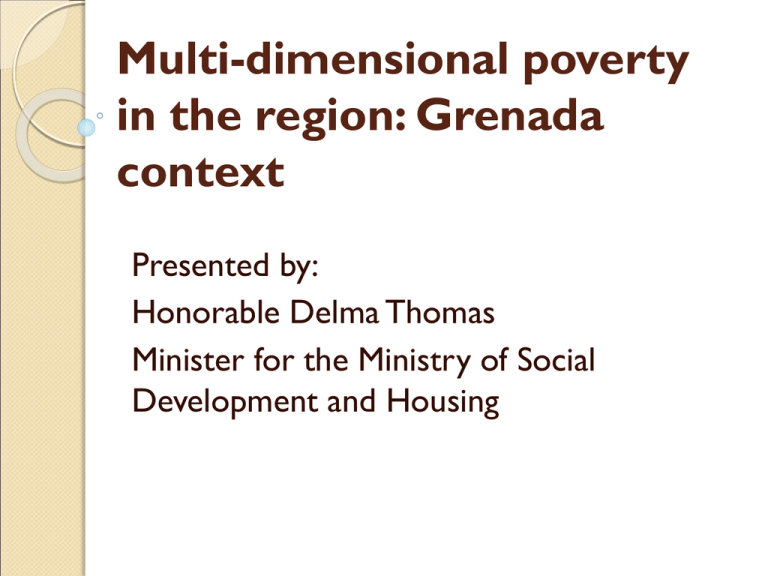
Multi-dimensional poverty in the region: Grenada context Presented by: Honorable Delma Thomas Minister for the Ministry of Social Development and Housing Background 2008 Grenada Country Poverty Assessment, 37.7% of the population (41,000 persons) lives under the poverty line Grenada has managed to reduce indigence and food poverty as per the 1998 Country Poverty Assessment, however poverty in 2008 remained at a comparable level to that of 1998 Governmental Policy Approach Developmental focus- ◦ To diversify the economy ◦ To improve the quality of primary and secondary education ◦ To invest in infrastructure ◦ To improve social services delivery Impediment to Sustainable Socioeconomic Development Low human capital development: ◦ Low levels of education and skills across age cohorts and income percentiles ◦ Increased prevalence of noncommunicable and communicable diseases ◦ Increased reported incidents of child abuse, teenage pregnancies, and domestic violence against women and girls Counteractive Measures Improved access to quality primary and secondary education Improved access to primary health care and improved infrastructure Enacted laws, Implemented policies and Prevention programs and protocols developed to aggressively address social problems of Child Abuse, Domestic Violence and Teenage Pregnancies Current vision for social protection Contextual framework utilizing a holistic approach to provide social protection The social protection system aimed at the protection of the population against vulnerability while assisting those who are already vulnerable due to poverty, natural disasters and physical disablement The measure includes developmental, preventative, remedial and supportive approaches ◦ Utilizes strategies such as direct money transfers, government initiatives for education and access to health, as well as interventions that address pressing social problems Support for Education, Empowerment and Development (SEED) aims to support the poorest and most vulnerable people in Grenada by providing them with Conditional Cash Transfers (CCTs) SEED’s Objectives Removal of fragmentation and duplication in existing social assistance programmes Improvement in targeting of benefits Increased coverage of poor persons Development of more cost effective delivery of benefits Reduced fiduciary risk in cash transfer processes Establishment of a link between the delivery of benefits and human capital investment, especially in education and preventive health care SEED Main Components Educational Cash Transfer which targets children between 3 and 18 years who are registered in public schools Health Cash transfer which targets households in need who are registered in community health centres Workshop participation component which facilitates self-development for beneficiaries of SEED SEED’s Target Objectives To target all those in need by developing an equitable system of selection and an efficient mechanism for the delivery of the conditional cash transfers To achieve this goal by the implementation of a targeting tool and a comprehensive targeting system Benefits of Accurate Targeting The optimal transfer scheme is one that gives transfers only to those under the poverty threshold It is given with differentiated transfers in accordance to the distance from each individual’s income and the poverty threshold Therefore, the poorest of the poor are the population with more need and therefore are to be prioritized in terms of the amount of the transfer
